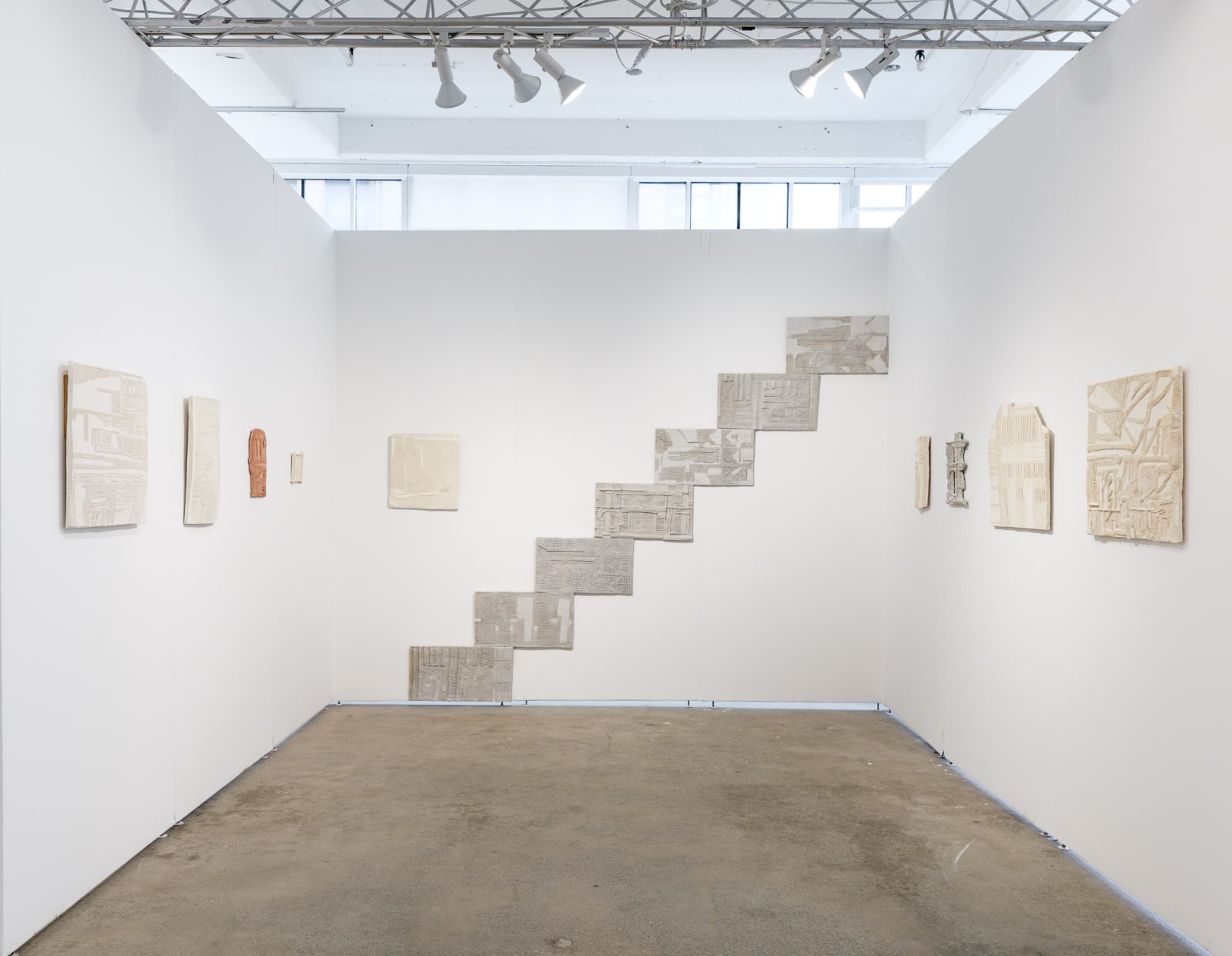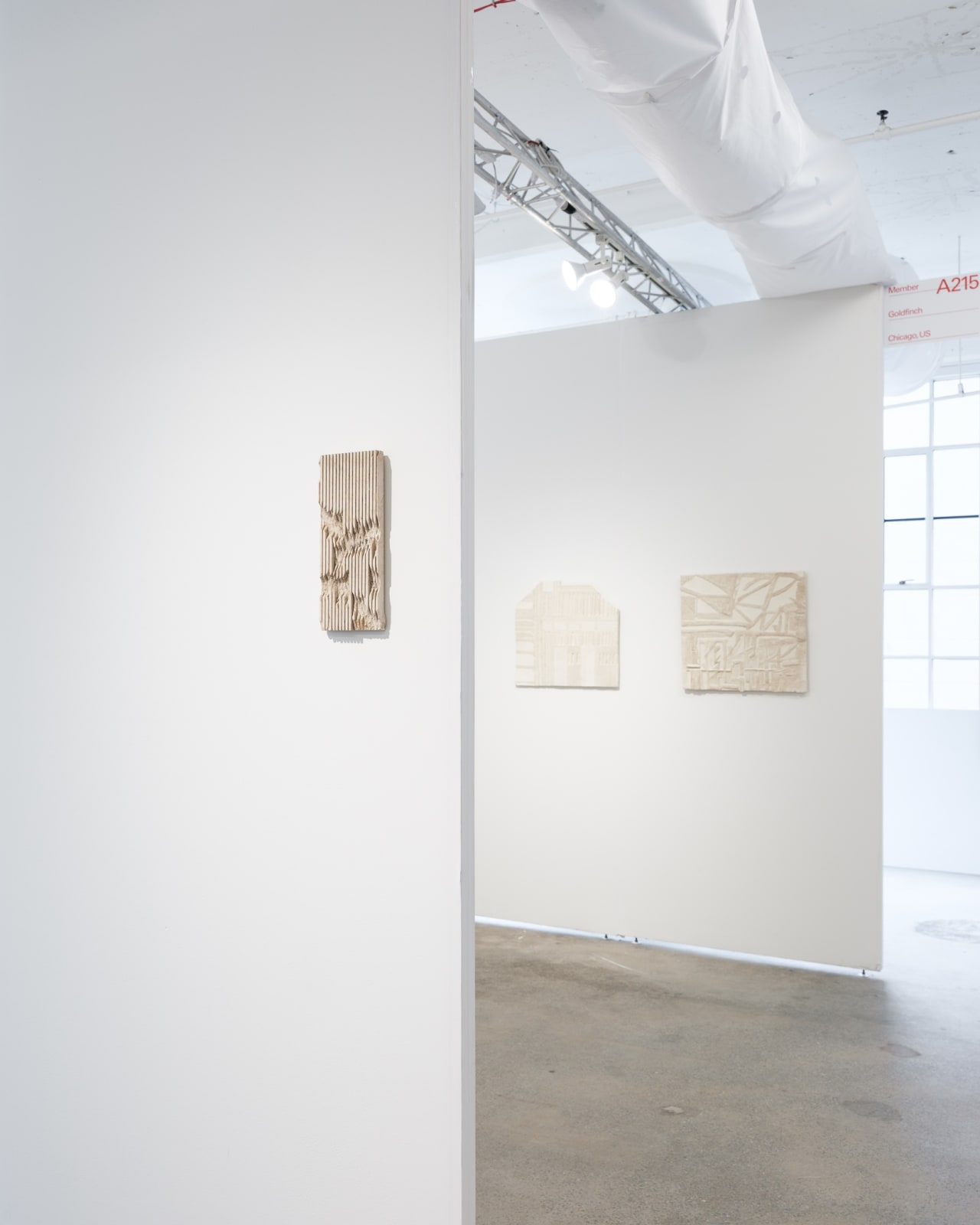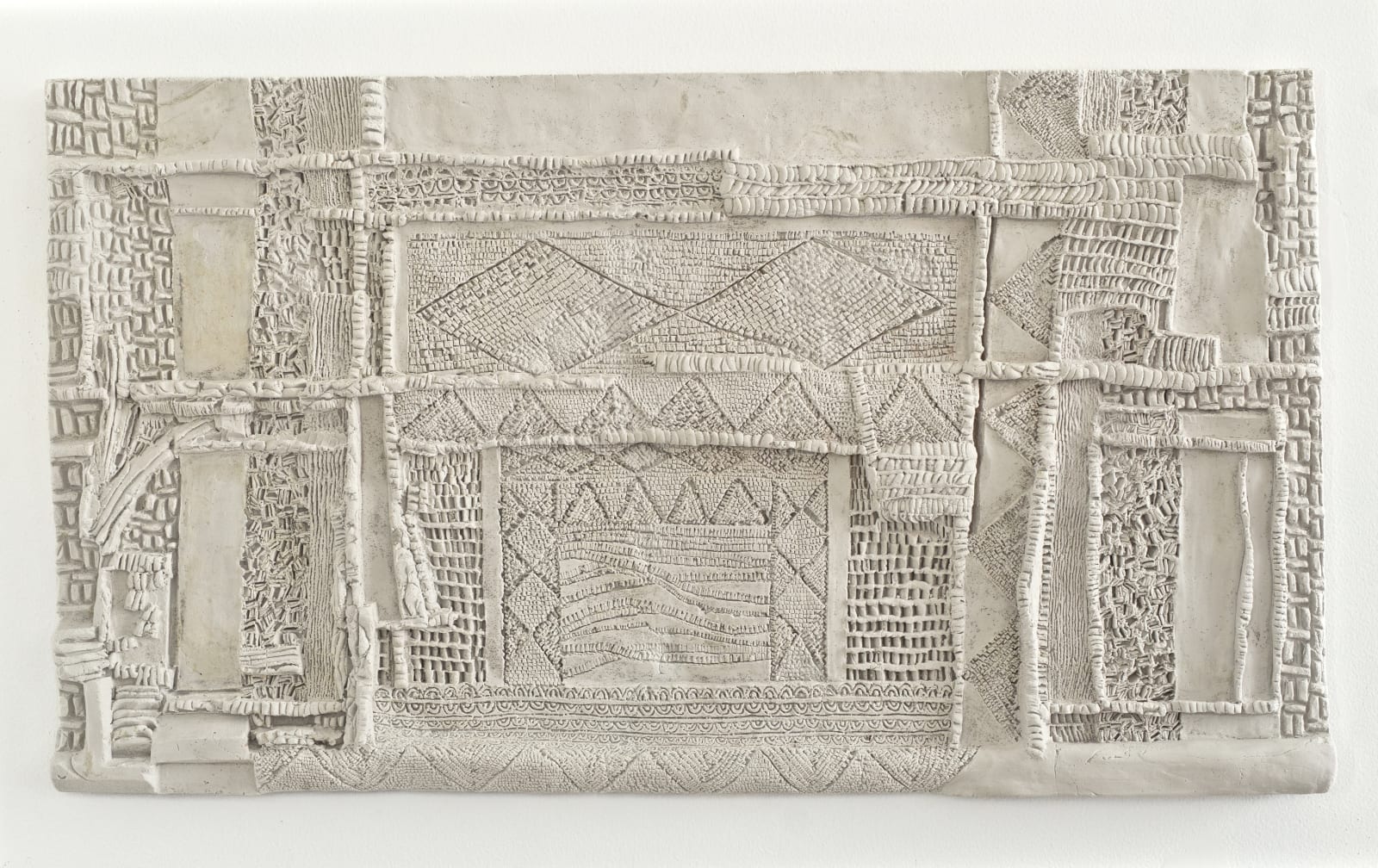NADA NY 2025: Presenting SaraNoa Mark
 Booth A-215
Booth A-215
Goldfinch’s NADA NY booth features a solo presentation of sculptures by SaraNoa Mark (she/they), a NYC-based artist who painstakingly inscribes repetitive marks and complex patterns into materials such as clay, paper, concrete, sand and glass, with the works’ final forms recalling fossils, archaeological fragments, cuneal writing, and ancient monuments. Mark explains, “I aim to enter into conversation with carved languages—from cuneiform tablets to sidewalk graffiti—that document an eternal impulse to score picture into place . . . At the core of my project is a concern with how humans transform our physical environments (and) the role of public monuments in our collective cultural imagination.”
Mark sees relief carving as a form of communication across time, space and place. “I work with a set of carving tools [that include] chisels, gouges, and veiners that act as an alphabet of an expanding asemic language.” By using carved texture rather than recognizable symbols as their primary means of artistic communication, Mark invents a language that is both poetic and haptic, “as much about touch as it is about sight.”
Mark’s site-responsive installations also aim to create sites of exchange between past and present, as with the site-responsive installation Yazılıkaya, part of a group exhibition titled “Carved Conversations” that Mark curated at Sultan Han, Sultanhanı, Aksaray Province, Turkey, in 2022. Yazilikaya is located on the site of Sultan Han, which was once the largest Seljuk caravanserai, a roadside inn and resting spot for traders and travelers along the 13th century Silk Road. “This 13th-century monument was initially constructed to host a community of traveling traders and pilgrims of different cultural backgrounds,” they explain, “brought together by its location on the most important medieval land route across Anatolia. It was constructed as a miniature idealized city, with a mosque in its center, surrounded by rooms for entertainment, lodging, food production, healing services, exchange, and conversation, and inhabited by pilgrims, traders, craftspeople, cooks, entertainers, storytellers, musicians, grooms, religious professionals, mystics, servants and enslaved individuals. Interactions among these people could only have taken place in this environment, one that existed within the local, natural, and social landscape. These exchanges transformed the daily lives of people throughout Eurasia, and spread the broader understandings of geography, religion, economics, political thought, and advances in science and technology that created the modern world.”
In response to Sultan Han’s history, Mark installed a reversible architectural intervention of hand-carved clay reliefs cast in concrete on the stairs of the kiosk-mosque (a type of early Persian mosque). These reliefs directly faced those etched some 800 years ago onto the caravanserai’s grand bedesten (a central market or bazaar), “meeting across time in a carved conversation on culture and place.”
Goldfinch’s booth at NADA includes a re-envisioning of Yazılıkaya as a staircase-shaped sculptural installation cast from the same molds Mark used when creating their Sultan Han monument. In doing so, we playfully posit the NADA New York art fair as a contemporary version of a caravanserai: a commercial marketplace that also fosters the cultural exchange of ideas, knowledge and mutual understanding.



















